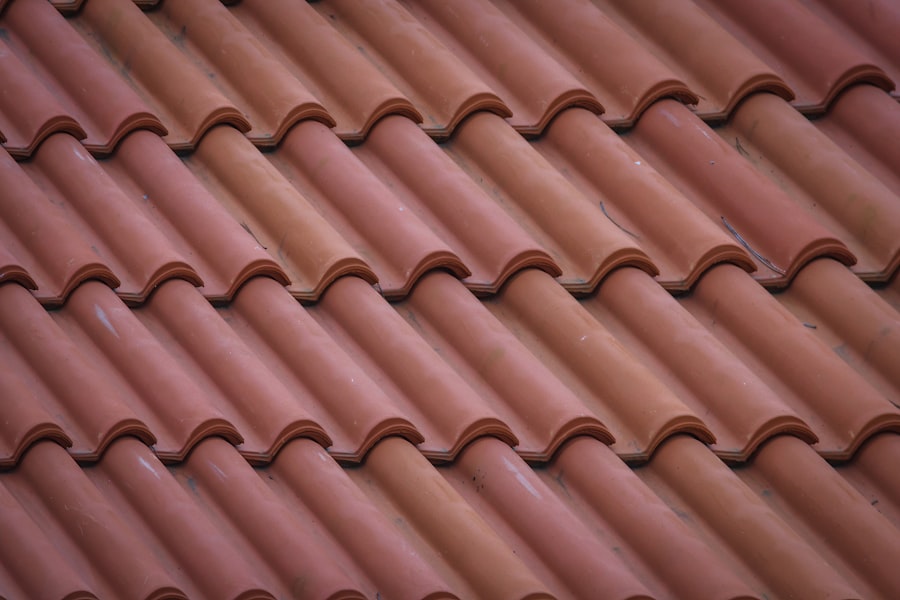Energy efficiency has become a hot topic in recent years, as homeowners are becoming more aware of the impact their homes have on the environment and their wallets. One often overlooked aspect of energy efficiency is the role that roofing plays in keeping a home energy efficient. The type of roofing material used, as well as proper insulation and ventilation, can greatly affect a home’s energy efficiency. In this article, we will explore the importance of energy efficiency in homes, the different types of roofing materials and their energy efficiency, and provide tips for maximizing energy efficiency through proper maintenance and upgrades.
Key Takeaways
- Energy efficiency is important for homes to reduce energy consumption and save money.
- Different roofing materials have varying levels of energy efficiency.
- Choosing the right roofing material for your home can improve energy efficiency.
- Proper insulation and ventilation are crucial for energy efficiency in homes.
- Solar roofing can harness the power of the sun for energy-efficient homes.
The Importance of Energy Efficiency in Homes
Energy efficiency in homes has numerous benefits, both for the environment and for homeowners’ wallets. By reducing energy consumption, homeowners can lower their carbon footprint and contribute to a more sustainable future. Additionally, energy-efficient homes require less energy to heat and cool, resulting in lower utility bills. This can save homeowners a significant amount of money over time.
Furthermore, energy-efficient homes are more comfortable to live in. Proper insulation and ventilation help regulate indoor temperatures, keeping the home cooler in the summer and warmer in the winter. This not only improves comfort but also reduces the need for excessive heating or cooling, further reducing energy consumption.
Understanding Roofing Materials and Their Energy Efficiency
There are several different types of roofing materials available, each with its own level of energy efficiency. Asphalt shingles are the most common roofing material used in North America due to their affordability and durability. However, they are not the most energy-efficient option. Metal roofing, on the other hand, is highly reflective and can help reduce heat absorption into the home. This makes it a more energy-efficient choice, especially in hot climates.
Another option is clay or concrete tiles, which have excellent thermal resistance properties. They can help keep a home cool in hot climates by reflecting sunlight and reducing heat transfer. However, they can be heavy and may require additional structural support.
Choosing the Right Roofing Material for Your Home
When choosing a roofing material for energy efficiency, there are several factors to consider. The climate in which you live plays a significant role in determining the best roofing material for your home. In hot climates, it is important to choose a material that reflects sunlight and reduces heat absorption. In colder climates, a material that provides good insulation and prevents heat loss is ideal.
Additionally, the color of the roofing material can affect its energy efficiency. Light-colored materials reflect more sunlight and heat, while dark-colored materials absorb more heat. Therefore, in hot climates, it is beneficial to choose a light-colored roofing material to keep the home cooler.
Insulation: The Key to a More Energy-Efficient Home
Insulation is a crucial component of energy efficiency in homes. It helps regulate indoor temperatures by preventing heat transfer through the roof and walls. There are several types of insulation available, including fiberglass, cellulose, and spray foam.
Fiberglass insulation is the most common type and is relatively affordable. It consists of tiny glass fibers that trap air and slow down heat transfer. Cellulose insulation is made from recycled paper products and is an environmentally friendly option. It is effective at reducing heat transfer but may settle over time, requiring periodic reinstallation.
Spray foam insulation is the most effective type of insulation as it creates an airtight seal, preventing any air leakage. However, it is also the most expensive option. It is particularly beneficial in areas with extreme temperatures or high humidity.
Ventilation: How It Affects Your Home’s Energy Efficiency

Proper ventilation is essential for maintaining energy efficiency in a home. It helps remove excess moisture and prevent the buildup of heat in the attic, which can lead to increased energy consumption for cooling purposes.
There are two main types of ventilation: passive and mechanical. Passive ventilation relies on natural airflow through vents and openings in the roof and walls. Mechanical ventilation, on the other hand, uses fans or vents to actively remove stale air and bring in fresh air.
Properly designed and installed ventilation systems can help regulate indoor temperatures, reduce the strain on heating and cooling systems, and improve overall energy efficiency.
Roofing Maintenance: Tips for Maximizing Energy Efficiency
Regular roofing maintenance is crucial for maximizing energy efficiency. Inspecting the roof for any damage or leaks and repairing them promptly can prevent heat loss or gain through the roof. Additionally, keeping the gutters clean and free from debris ensures proper drainage, preventing water damage that can affect insulation and energy efficiency.
Trimming overhanging tree branches can also help prevent damage to the roof and improve energy efficiency. Branches that touch or rub against the roof can cause wear and tear, leading to leaks or reduced insulation effectiveness.
Solar Roofing: Harnessing the Power of the Sun for Your Home
Solar roofing is an innovative solution that allows homeowners to harness the power of the sun to generate electricity for their homes. Solar panels are integrated into the roofing material, providing a clean and renewable source of energy.
Solar roofing offers numerous benefits, including reduced electricity bills, increased home value, and a reduced carbon footprint. While the initial cost of installation may be high, homeowners can recoup their investment over time through energy savings.
Energy-Efficient Roofing Upgrades: What You Need to Know
There are several energy-efficient roofing upgrades that homeowners can consider to improve their home’s energy efficiency. One option is to add a reflective coating to the roof, which helps reduce heat absorption and keeps the home cooler in hot climates.
Another upgrade is to install a cool roof, which is designed to reflect more sunlight and absorb less heat than traditional roofing materials. Cool roofs can significantly reduce energy consumption for cooling purposes, especially in areas with high temperatures.
Additionally, adding insulation to the attic or roof can improve energy efficiency by preventing heat transfer. This is particularly beneficial in older homes that may have inadequate insulation.
Improving Your Home’s Energy Efficiency with Roofing
In conclusion, energy efficiency in homes is crucial for both the environment and homeowners’ wallets. The type of roofing material used, as well as proper insulation and ventilation, play a significant role in a home’s energy efficiency. By choosing the right roofing material, maintaining the roof properly, and considering energy-efficient upgrades, homeowners can significantly reduce their energy consumption and save money on utility bills. It is important for homeowners to consider these factors when making decisions about their roofing to contribute to a more sustainable future.
If you’re interested in learning more about roofing and its impact on home energy efficiency, be sure to check out the comprehensive guide provided by San Pedro Roofers. This guide covers everything from tips and costs to installation techniques for a durable and beautiful roof. In addition, their website also offers a variety of other informative articles, such as the eloquent elegance of gambrel roofs and a comprehensive guide on roof replacement costs for homeowners. For all your roofing needs, San Pedro Roofers is your go-to resource. (source)
FAQs
What is roofing?
Roofing refers to the process of constructing or repairing a roof, which is the uppermost part of a building that protects it from weather elements.
What is home energy efficiency?
Home energy efficiency refers to the ability of a home to use energy efficiently, reducing energy waste and lowering energy bills.
How does roofing affect home energy efficiency?
Roofing can affect home energy efficiency by reducing heat gain or loss through the roof, improving ventilation, and reducing air leaks.
What are some energy-efficient roofing materials?
Energy-efficient roofing materials include metal, tile, slate, and asphalt shingles with reflective coatings.
What is a cool roof?
A cool roof is a roofing system that reflects more sunlight and absorbs less heat than a standard roof, reducing the amount of heat transferred to the building below.
What are some benefits of a cool roof?
Benefits of a cool roof include reduced energy bills, improved indoor comfort, extended roof lifespan, and reduced urban heat island effect.
What is attic insulation?
Attic insulation is a material installed in the attic to reduce heat transfer between the attic and the living space, improving energy efficiency and indoor comfort.
What are some types of attic insulation?
Types of attic insulation include fiberglass batts, blown-in cellulose, spray foam, and radiant barriers.
How can proper ventilation improve home energy efficiency?
Proper ventilation can improve home energy efficiency by reducing heat buildup in the attic, preventing moisture buildup, and improving indoor air quality.
